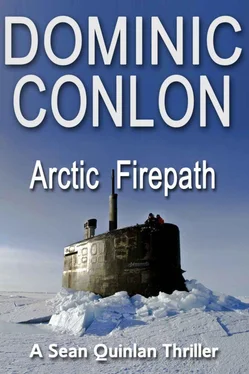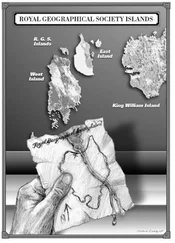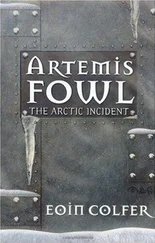The wind was still a problem; it could cause his diversion to fail. But as he had no other plan he felt forced to give it a try. He moved over to the port side to position himself directly underneath the bridge.
He placed the bundle of hessian sacks on the deck below his own cabin. Next he removed the vodka bottle from the inside of his thin coat. Taking one last precious sip, he poured the rest of the alcohol over the sacks.
He fished in a pocket for a cigarette lighter. Shielding the old fashioned guard, he attempted to get it to work. Each time the wind prevented a flame from forming. He sheltered the lighter under his coat, trying again and again for a light. Eventually he got a steady flame, nearly setting light to his clothes. He leaned over and put the light to the heap of sacks.
Waiting a second to ensure the spark had taken hold, he shouted ‘Fire!’ The sacks burst into a blaze, but he worried that the fire would die out too quickly. He scurried over to starboard side and hid behind the companionway. A soldier emerged, calling to his comrade to fetch a fire extinguisher. When the man appeared, Grigori shot up the ladder. The bridge was clear.
Grigori scooted in and peered around the radio room door. He offered up a silent prayer. It was empty.
The mammoth icebreaker came to a grinding halt, hard up against the pack ice. Men hurried down the starboard ladders and hammered in two steel poles. Once complete, they caught lines from the bow and stern and secured them to the posts.
Feliks was glad to escape from the control room. It was only a question of time before the control rod seals leaked. Even so, the reactor’s temperature remained steady. He took refuge on the helicopter deck, closely followed by his American minder. They watched as teams of engineers below begin clearing a space on the middle deck. Twenty feet away, a man dressed in full Arctic gear spoke into a walkie-talkie. He appeared to be directing the men on the ice where a large collection of vehicles and cranes had gathered a short distance from the ship.
Feliks staggered towards him, head-down, fighting his way against a gust of hail. ‘Are you going to load your equipment in these conditions?’ He had to shout to make his voice heard over the gale force winds.
The man glanced at him briefly and barked into his set. When he finished he turned back to Feliks. ‘We don’t have any choice.’
‘I’m the chief engineer on LK-80’ Feliks said, holding out his hand.
‘Dan — I’m the program manager.’ They shook. ‘I’m responsible for getting all the equipment on board and making sure everything works as it should.’
‘They are still alive?’ Feliks nodded to the water under the stern.
‘Yep. I heard there are over a hundred.’
‘That’s fantastic news!’ Feliks feared Grigori had killed all the crew.
‘Five people are dead down there. What happened?’ The man regarded him warily.
Feliks shrugged his shoulders, understanding the unspoken accusation. ‘I was below decks. I think someone made a big mistake.’
The man’s eyes flickered, but he said nothing.
Feliks motioned at the crane and the vehicles. ‘You brought a lot of gear. How do you stop the weight falling through the ice?’
Dan looked away, and then back at Feliks. ‘Steel matting.’ He pointed to the road they had created. ‘The lattice spreads the load and once frozen into the surface the roadway becomes much stronger than ordinary ice.’
The wind dropped a little and Dan barked further orders into his handset. More matting was rolled out towards LK-80 and a big derrick trundled forward on huge rubber tyres. Feliks stayed, ignoring the cold, fascinated by the developments taking place. Something of the engineer in him was impatient to learn how the Americans would set about the rescue.
Now that the frantic work was finished, deck hands positioned flood lights around the outside. A harsh acrid light lit the open space. Workers set to, and the sparks from their arc welders chased the deep shadows away. The gantry closed up alongside and Dan pointed as the first items of gear were lifted on-board. ‘The whole is called the Submarine Rescue Diving and Recompression System. We call it SRDRS, for short.’ He waited as a great A-frame unit was hoisted aboard. ‘This is one of the most important sections. Basically it’s a crane which will be bolted to the after-deck. It’s part of the Assessment/Underwater Work System.’
‘Called AUWS I expect,’ Feliks responded.
Dan smiled. ‘You got it. All of the equipment sits on reinforced steel templates which we bolt or weld to the deck. The various pieces of kit are then positioned on top of the templates and bolted into place. That’s how we get the necessary structural integrity.’ Dan shouted into the walkie-talkie as the wind took hold of a particularly large steel section and swung it around. Two deck hands dodged in to clip lines and steadied the piece.
‘Dangerous stuff,’ remarked Feliks.
‘You can see why it’s so important to clear the deck,’ Dan replied.
‘Why are some items painted yellow?’ enquired Feliks.
‘Ha ha — I don’t really know!’ laughed Dan. I suppose the kit is easier to spot in these types of conditions.’
As Feliks looked on the team of engineers began the job of bolting the structures. Dan continued his running commentary. ‘To recover and rescue personnel from a disabled submarine, we have a Pressurised Rescue Module. He looked sideways at Feliks.
‘PRM?’ offered Feliks.
‘Correct. It’s a tethered, remotely operated submarine rescue vehicle — like a horizontal cylinder with hemispherical ends. You’ll see it in a minute when it’s taken on board. We send it down to survey the DISSUB.’
‘Hang on, DISSUB?’ asked Feliks.
‘Disabled/Distressed Submarine. We need to find out how the DISSUB is lying, what damage she sustained, and whether the access hatches are free.’
‘Do you have video?’
‘Yep. Navigation, video and propulsion are mounted externally.’
‘Can you communicate with it to the sailors in the submarine?’
‘You bet. Often it’s the first contact they have with the outside world.’
‘So, once you know where its lying, and they know you’re here — what happens next?’
‘We mate the PRM with a free access hatch, and take up to 16 personnel at a time.' Dan indicated the yellow crane, now bolted to the deck plates and overhanging the taffrail. ‘The A-frame hauls the PRM up. We transfer the men out and we go down for the next group.’
‘Supposing the pressure inside the submarine is too high?’
‘Our PRM handles that too, though we would need to transfer the crew under pressure to a decompression chamber. But we know the pressure inside has been adjusted to atmospheric.’
‘So when does the action start?’
Dan looked out over the deck. ‘We have to position your ship immediately over the DISSUB. While we’re doing that, the guys will be double checking everything to make sure we can begin the rescue as soon as we arrive.’
Feliks was impressed by what he had seen. You had give the Americans their due.
* * *
The operator pushed the lever forward, and the powerful lights of the Pressurised Rescue Module moved, picking out the seabed through the dense plankton.
'Anything yet Jim?'
Jim shook his head in response.
'Timings?'
Jim checked the readout on the screen. 'We're looking at over twenty minutes to get down.'
He turned his attention back to the computer. 'We should be coming up on the rear dorsal fin any minute now.' He pressed the joystick over to the left, and a grey mound appeared in the video feed. Another nudge, and the camera traversed slowly; the dark smudge filled the monitor. He altered a dial, and the display zoomed out to show a huge cowl, covering the submarine's propeller.
Читать дальше












